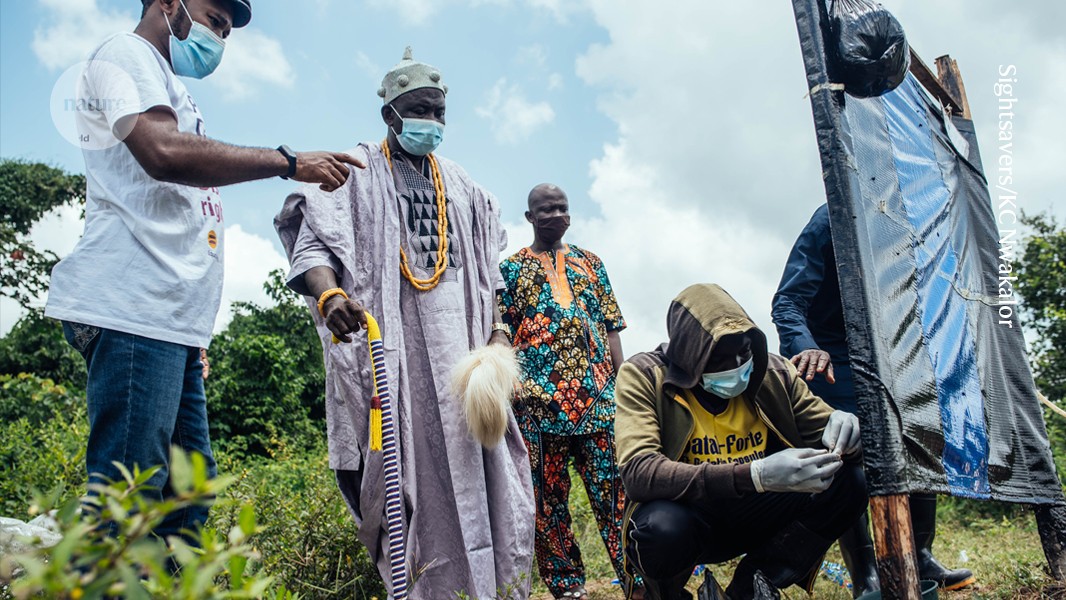Too often, the potential of a biomedical discovery to tackle disease is not fully realized. Perhaps the economic return is not high enough, or the mindset to look for alternative applications for an idea is missing. The discovery can end up buried in an academic publication or never see the light of day.
So many biomedical researchers partner with non-governmental organizations (NGOs) to transform their scientific ideas into products, working outside the typical biotechnology or pharmaceutical drug-development process. For these NGOs, collaborating with academics means that the products and technologies can reach the people who need them most. In return, academics get to develop their idea without having to spin off a company or sell it to a big pharmaceutical firm.
Academics with experience of partnering with NGOs make a strong case for these collaborations, and say that they should be more frequent. Nature asked four people who have formed such partnerships for their tips on how to collaborate successfully.
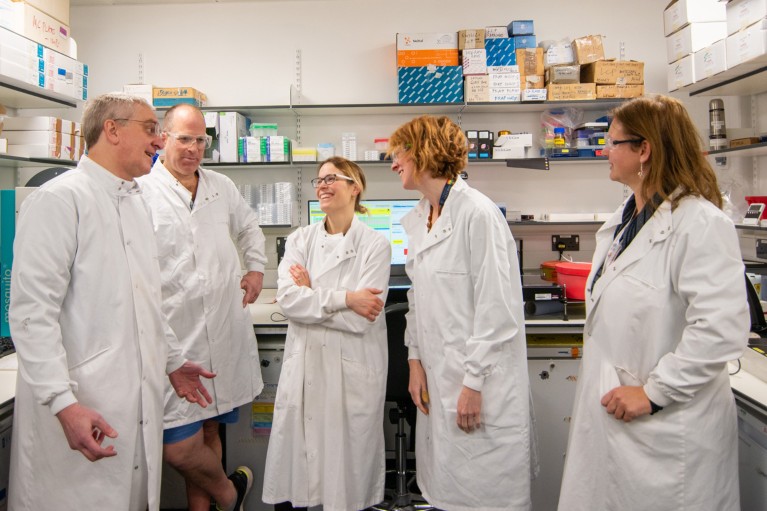
Annette von Delft (third from left) with other core members of the Covid Moonshot collaboration to produce low-cost antiviral drugs.Credit: Matteo Ferla
ANNETTE VON DELFT: Cooperation to battle an invisible enemy
Head of anti-infectives at the Centre for Medicines Discovery at the University of Oxford, UK.
At the height of the COVID-19 pandemic, we all felt the duty to do our part. When the first molecular structure of a protein found on the SARS-CoV-2 virus was released at the beginning of February 2020, some colleagues and I started a worldwide X (formerly Twitter) collaboration to identify molecules that could block infection by the virus. What was just an exchange of ideas soon grew to an open-science consortium of scientists, pharmaceutical research teams and students from around the world, called the COVID Moonshot.
The dream was to create a pill that everyone around the globe could get quickly and affordably. In no time, we had a handful of potential candidate targets for a drug. I had been working on the discovery and development of affordable drugs against viruses, bacteria and fungi long before COVID-19 struck, and I had always encountered a big dilemma: how do you convince venture capitalists that it is worth investing money in something that won’t deliver an economic return? But, with the world battling a viral enemy, we could rely on an inexhaustible wellspring of goodwill, from single researchers to private biotech firms.
A project such as this, born in an open-science collaborative way, could never lead to profit. We couldn’t waste time dealing with intellectual-property rights, so everyone who wanted to get involved was asked to give up any potential royalties: you can’t patent something created from crowdsourcing. Thanks to this global teamwork, we found a series of molecules that could theoretically bind to the main SARS-CoV-2 enzyme, Mpro, and block the virus’s replication machinery.
One candidate then passed further testing and showed antiviral drug potential. During this process, we spent a long time thinking about how to bring a non-patentable compound to the market. The international NGO Drugs for Neglected Diseases initiative (DNDi) was founded in 2003 by seven partners — including international aid organization Médecins Sans Frontières (also known as Doctors Without Borders), which provided initial funding — in response to the frustration of ineffective, unsafe, unavailable or unaffordable medicines.
DNDi had the preclinical testing and affordable-medicine expertise that COVID Moonshot wanted. We needed to access large-scale manufacturing and regulatory approvals, and DNDi provided this for us, either directly or through negotiated partnerships with other non-profit organizations or through biotech. For us, it worked as a bridge between researchers and the general public without the need to invest all the money typically associated with drug development. Of course, the costs of producing the drug and running preclinical tests remain. However, NGOs such as DNDi have the expertise and connections to outsource the early discovery and preclinical costs to philanthropic or government funders.
For scientists working on neglected diseases or antimicrobial resistance, areas in which pharmaceutical companies do not necessarily invest because they can’t get their money back, NGOs have picked up the torch. We brought the discovery, and they brought translational expertise to the project. We are now about to start the first human trial with our lead candidate. If all goes well, we could soon have an affordable antiviral for COVID-19 and be better prepared for future pandemics.
When starting collaborations with NGOs, you need to consider that every phase takes much longer, because you need to find alternative funding pathways. For academics who want to partner with an NGO, I would suggest looking for several potential partners. With their research project in mind, scientists should explore how big the organizations are, how quickly the process moves and how much access they have to alternative funding systems. But in my experience, linking up with NGOs is always worthwhile: their ability to reach more people is more comprehensive than that of drug companies, and their charitable values are worthy. At the end of the day, we do science to help people, and NGOs connect scientists with people most in need.
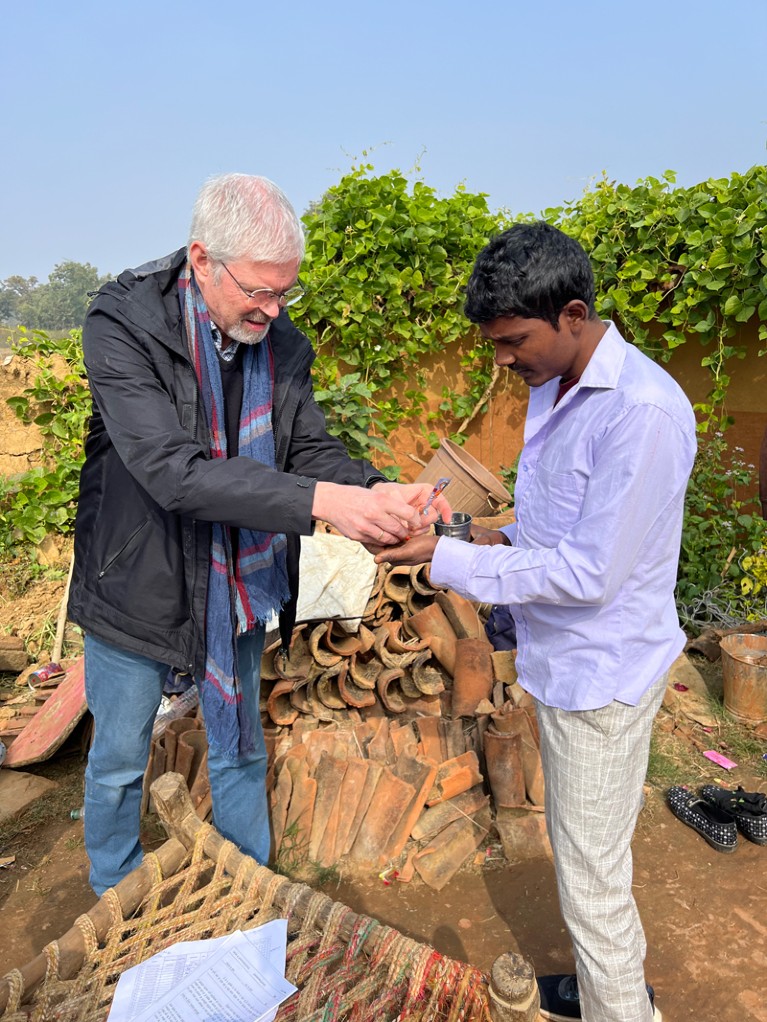
Medical director of No Leprosy Remains, Wim van Brakel (left) administers medicine to reduce leprosy progression in India.Credit: Danish Suhail
WIM VAN BRAKEL: Build long-term relationships to tackle niche diseases
Medical director at No Leprosy Remains in Amsterdam, the Netherlands.
There are still countries and areas where leprosy and other neglected diseases are a heavy burden. If a government adopts new treatments or prevention tactics, everyone wins. This is why disease-focused NGOs, such as No Leprosy Remains (NLR), strive to facilitate close collaborative work between academics and policymakers. Thanks to this cross-collaborative approach, NLR has introduced life-changing interventions worldwide. It has teamed up with academics and policymakers to draft the World Health Organization’s technical guidelines to stop leprosy transmission. Thanks to these, in 2023, the Maldives was able to achieve the goal of no local transmission — taking a step closer to becoming a leprosy-free country. NLR is also working on stronger preventions in India, Brazil, Bangladesh and Nepal.
As disease specialists, NLR is part of a big network of sister organizations and has offices in several countries and good connections in local governments. NLR offers academics the field knowledge and local liaisons that they might not be able to find in their research institute. For academics in low- and middle-income countries, NLR offers training on research methods and scientific writing, connections to Western research institutions and mentorship for career advancement.
In the academic world, NGOs are a tiny cog in the machine. For small entities like us, it is essential to establish long-term relationships with academic partners. Small NGOs usually work well with the same university partners and set of researchers. In this way, you can develop mutual respect, and know what to expect from each other.
In the future, I think it would benefit NGOs to have more staff with hybrid positions — those that cross over into the academic world. I worked as physician on the front lines for 17 years, but now I have moved to do more administrative work for NLR. This includes networking with our academic collaborators, which could help us to connect better with the research environment.
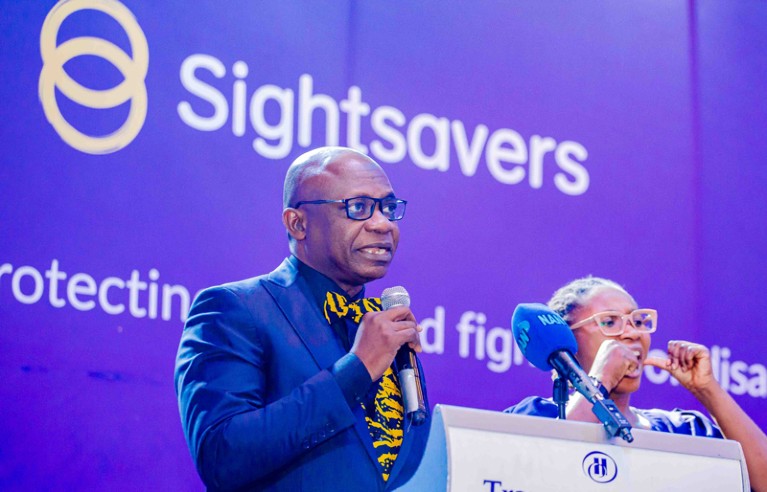
Sunday Isiyaku, who moved from academic to NGO-based research, speaks at an event celebrating 70 years of his employer Sightsavers working in Nigeria.Credit: Joy Tarbo/Sightsavers
SUNDAY ISIYAKU: Embrace the researcher-in-NGO career path
Country director for Nigeria and Ghana at Sightsavers in Kaduna, Nigeria.
When people think about academia and NGOs, they see two different career paths, but sometimes they blend. I started my career as a biomedical scientist at the Nigerian Institute of Trypanosomiasis Research in Kaduna. While climbing the academic ladder, I had a chance to collaborate on a few projects funded by the World Health Organization. I got involved with Sightsavers, an NGO focused on preventing avoidable eye conditions and blindness, and fighting the stigma around disabilities in low- and middle-income countries.
Sightsavers is one of the only international NGOs to hold the independent research organization status in the United Kingdom, meaning that, similar to universities, it can apply for specific funding to sustain its research. I felt that I could make a difference by using my research background to improve people’s lives. So, I jumped at the opportunity and embraced the researcher-in-NGO career path. What makes Sightsavers different from some NGOs is that research and evidence are at the core of its interventions.
Sightsavers has around 20 research staff, half of whom are employed in institutions in Africa, which is home to the majority of people affected by the eye conditions that Sightsavers addresses. These conditions are mostly a consequence of neglected diseases or treatable infections, but in low- and middle-income countries they are not tackled efficiently or quickly, with devastating consequences for people’s lives. This is when Sightsavers’s intervention is most needed. For example, river blindness is caused by a bite from a parasite-infected black fly (Simulium damnosum). In West Africa, it is responsible for a huge number of cases of infection-related blindness. Scientists proved that the drug ivermectin was effective at blocking parasite transmission, but it had never been tested for river blindness in people. Sightsavers partnered with researchers, local communities and organizations in West Africa to test it in people — and it worked. Thanks to Sightsavers’s data, ivermectin mass treatment is now a standard procedure to eliminate this disease from affected countries.
Sightsavers also establishes collaborations with local governments and communities to ensure that scientific discoveries are relevant and implemented in the context of the country or the community. The organization has helped academic institutions to communicate better with communities to encourage people to take preventive treatments for diseases such as river blindness, schistosomiasis and lymphatic filariasis.
Academic institutions and NGOs each have their own strengths and weaknesses. Sightsavers’s strength is understanding how to use research to deliver products that affect human lives. Its strict focus, however, can lead to differences in perspective and goals between the NGO and the academics. Often, researchers are more interested in gathering further knowledge on a disease, and they can lose focus on finding a prompt solution to a problem. An NGO’s goal might be to change a country’s policy regarding disease treatment, because it sees that current policy doesn’t work. In this case, the NGO needs research partners who can provide evidence that would influence such a policy change.
As an academic now working in an NGO, I know very well that for successful programmes, NGOs need to engage with academics in institutions, because their knowledge can help our programme to be the best. We need evidence to ensure we are doing the right thing. Academics ask the tough questions, which are essential to obtaining solid evidence. Joining forces with research staff employed by institutions, as I was when I started with Sightsavers, can help to shorten the distance between these two worlds. Hybrid positions help researchers to think about the applications of their work right from the start and help NGOs to access scientific discoveries early on. Bringing different people with different backgrounds and mindsets to work together is the only way to change people’s lives.
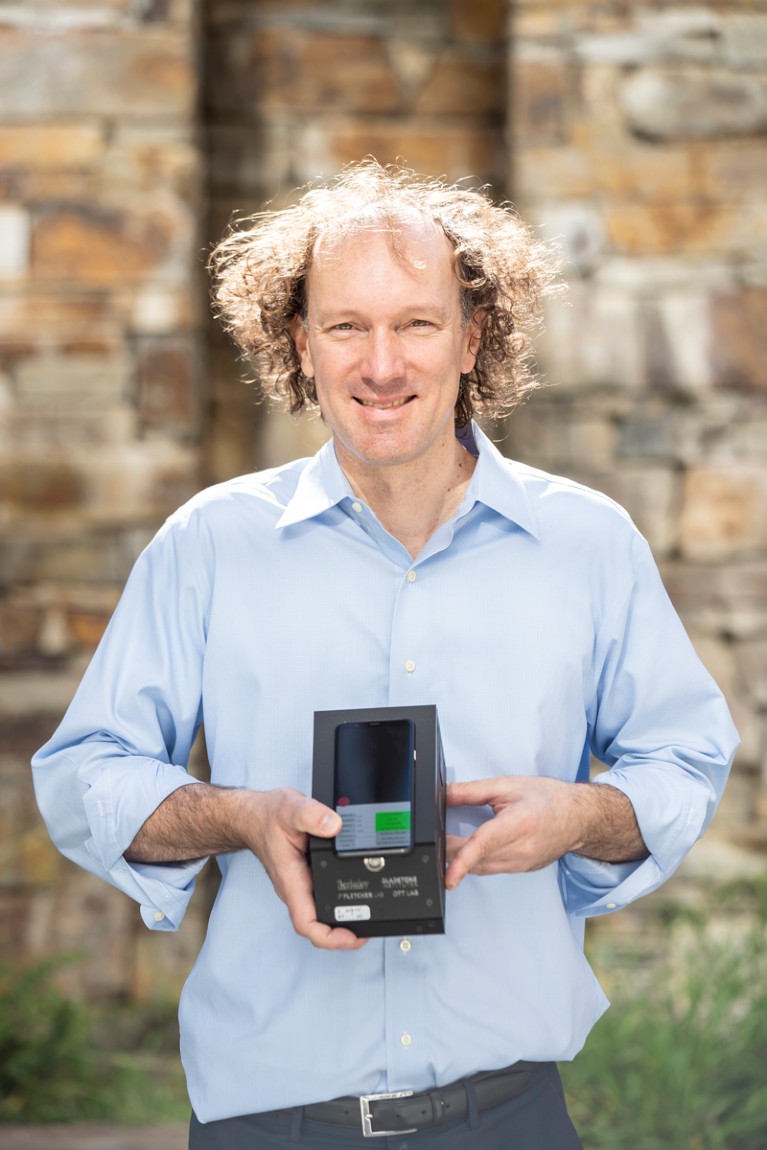
Daniel Fletcher’s research group at the University of California, Berkeley, tested the use of the CellScope diagnostic device with the help of several NGOs.Credit: Adam Lau/Berkeley Engineering
DANIEL FLETCHER: Make it easier to discover NGO funding opportunities
Bioengineer at the University of California, Berkeley, and inventor of the CellScope.
My laboratory focuses on discovering how single molecules come together to build a biological system. And my team does it by developing custom experimental methods to understand how molecules shape the structures and dynamics of a cell.
Once, a group of lab students and postdocs asked, “How is it possible to study pathology in remote places?” Intrigued, we started to make hypotheses and test them. This is how the CellScope was born, in 2011 . It’s a miniaturized microscope that uses mobile phone and tablet cameras to collect images. In the beginning, we didn’t have a good sense of how to use it, and I didn’t have the funds to test out the device, so I started looking around for potential collaborators.
Initially, we partnered with local non-profit organizations that were working in ocean conservation to test our device during ocean sampling and educational projects. That gave us great feedback to improve the device’s features, such as customizing software and optics. It also made me think about potential applications.
Next, we worked with the California Academy of Sciences in San Francisco and expanded the device’s use in education. Those NGO partnerships helped a lot in fully developing CellScope as a tool, because the organizations were prepared to invest in the scientific novelty, even if the commercial drive still needed clarification.
Once the lab team understood the full potential, I decided to continue working with NGOs to test the technology for biomedical applications in the populations that would benefit most. I had minimal experience in global health at the time, so I contacted the Bill & Melinda Gates Foundation in Seattle, Washington, an NGO leader in that area. It helped us to connect with researchers in other countries and to do field testing for health and disease-control applications, such as on-site diagnosis of tuberculosis or malaria, and analyses of eye conditions associated with infections in villages far away from main hospitals. The timing between diagnoses and interventions in such cases can really make the difference between life and death.
Through CellScope, I have partnered with several non-profit organizations, both small and large, and I learnt to navigate those partnerships’ positives and the challenges. As a researcher leading a project, you need to think about various ways of supporting it. NGOs are one way, but they should be part of a range of sources of support. NGOs can be great accelerators for projects when your idea matches their interests. But, because NGOs have limited funding, they need to maximize their priorities. So, if your project is not spot on, they will pursue others that make more sense for them.
I wish there were some easier way of learning about the funding opportunities from various NGOs. Most of my NGO partnerships came through word of mouth, rather than through a conventional open-call application. Having some sort of centralized database in which you can find NGOs’ priority areas, funding capabilities and possibly calls for grants would help academics to engage more with those realities.
Despite the challenges, these partnerships have been wonderfully productive for everybody involved. My team has learnt a lot about how a scientific idea can have a much broader range of applications than its original purpose. We learnt how out-of-the-box thinking can really change people’s lives. Communities now receive prompt diagnoses, thanks to what was originally just a curiosity project.


